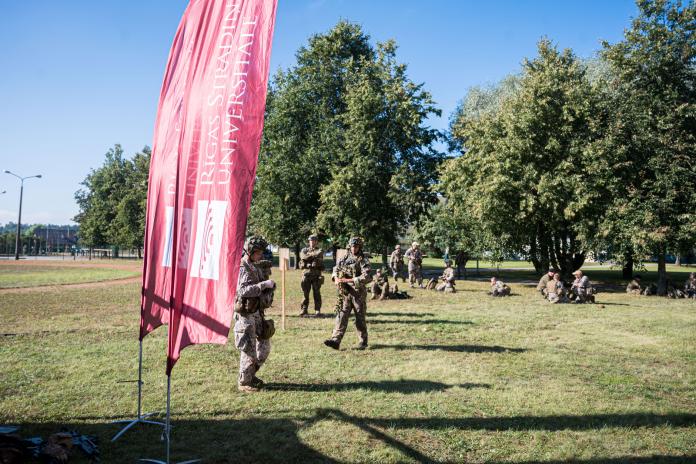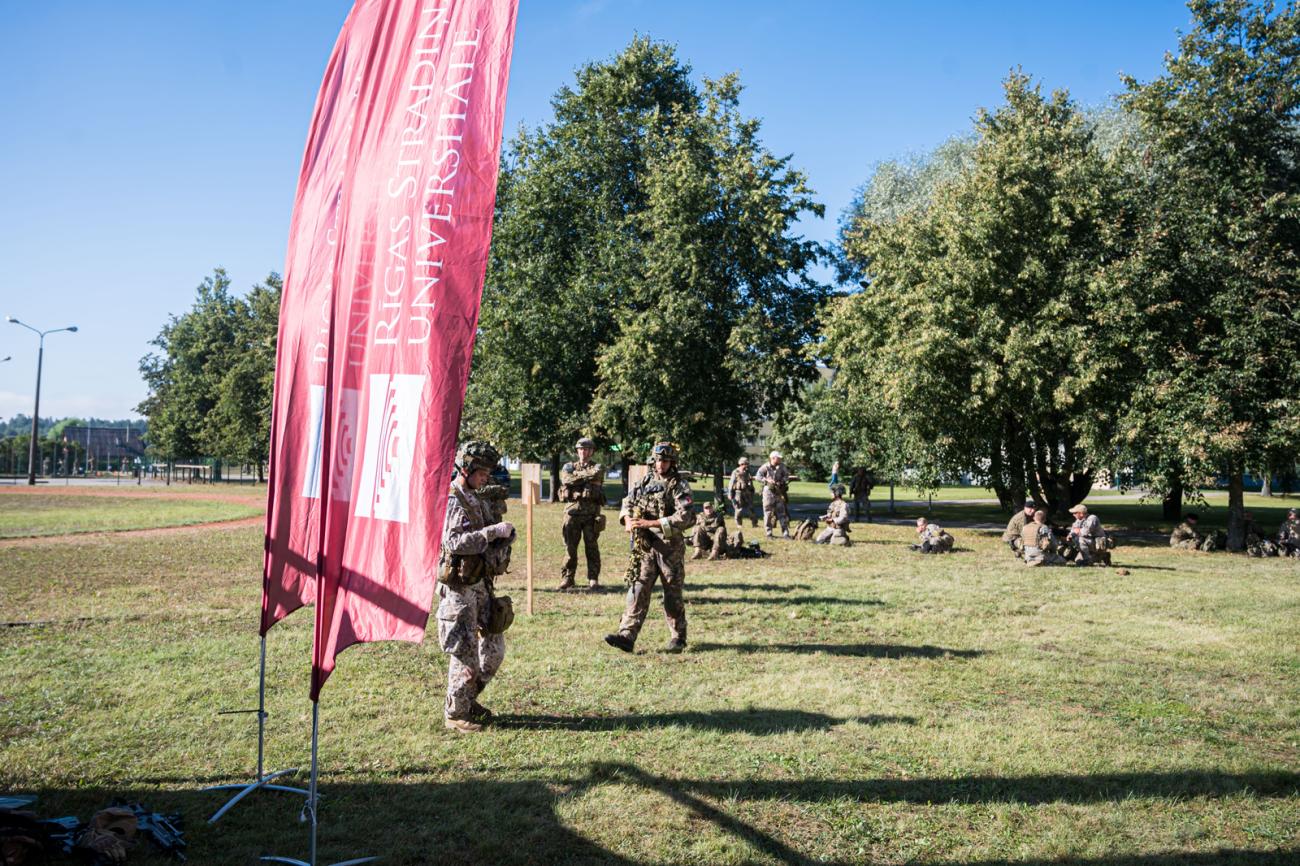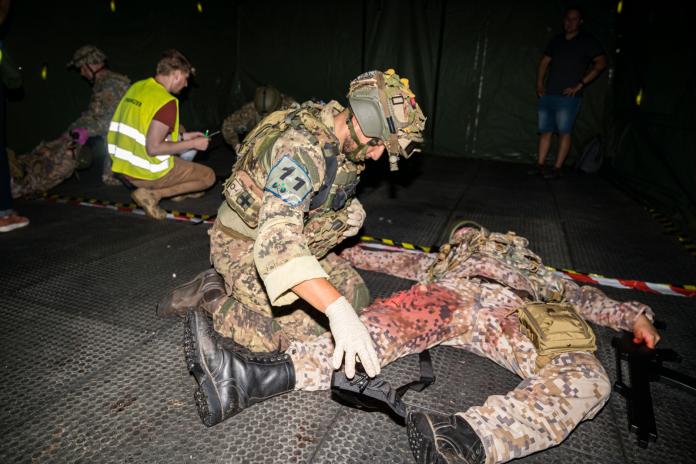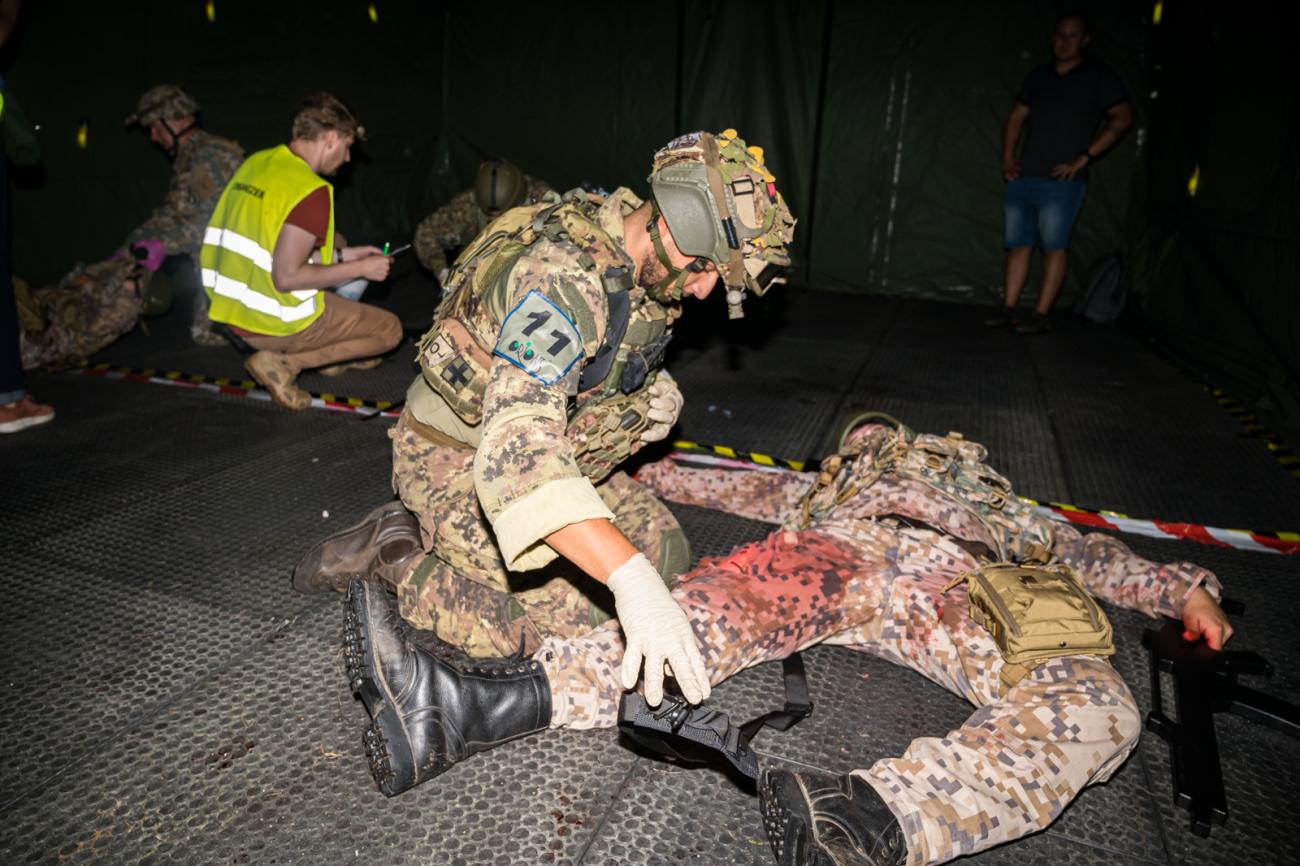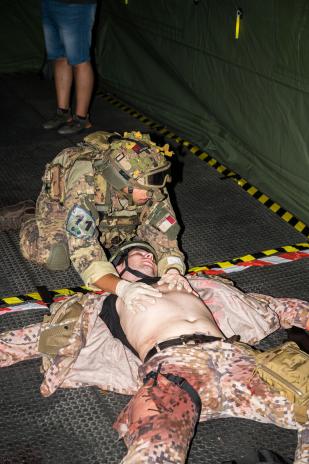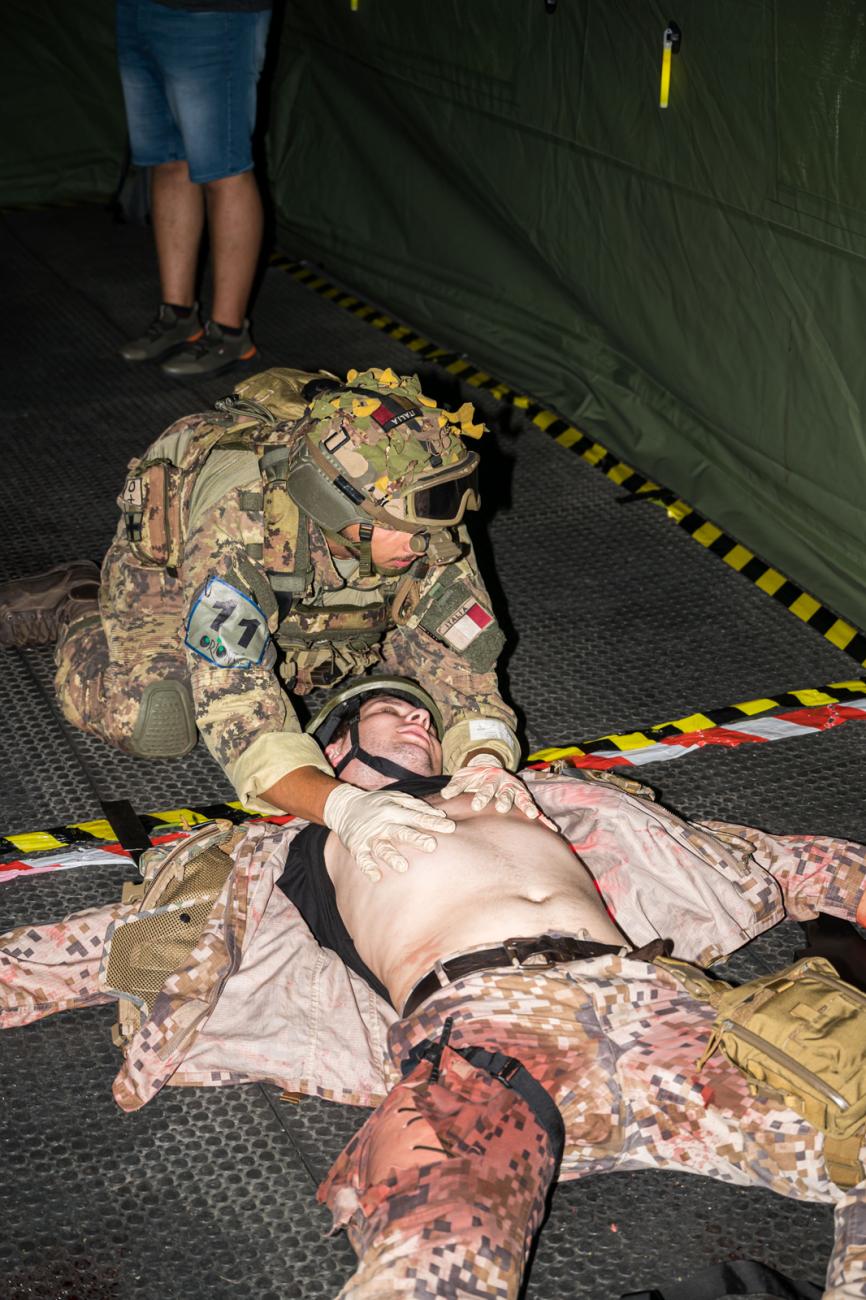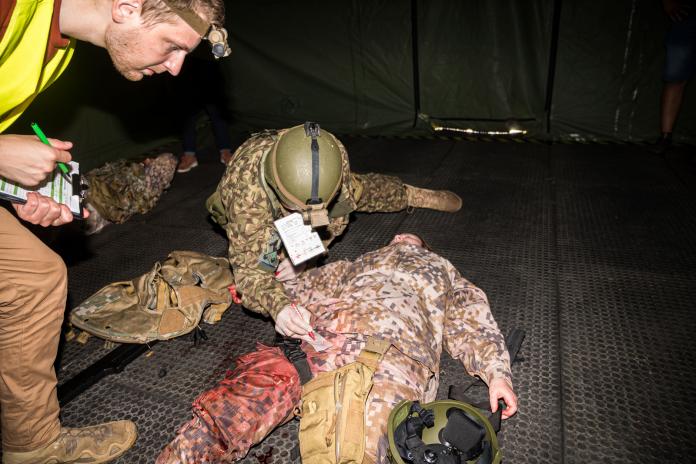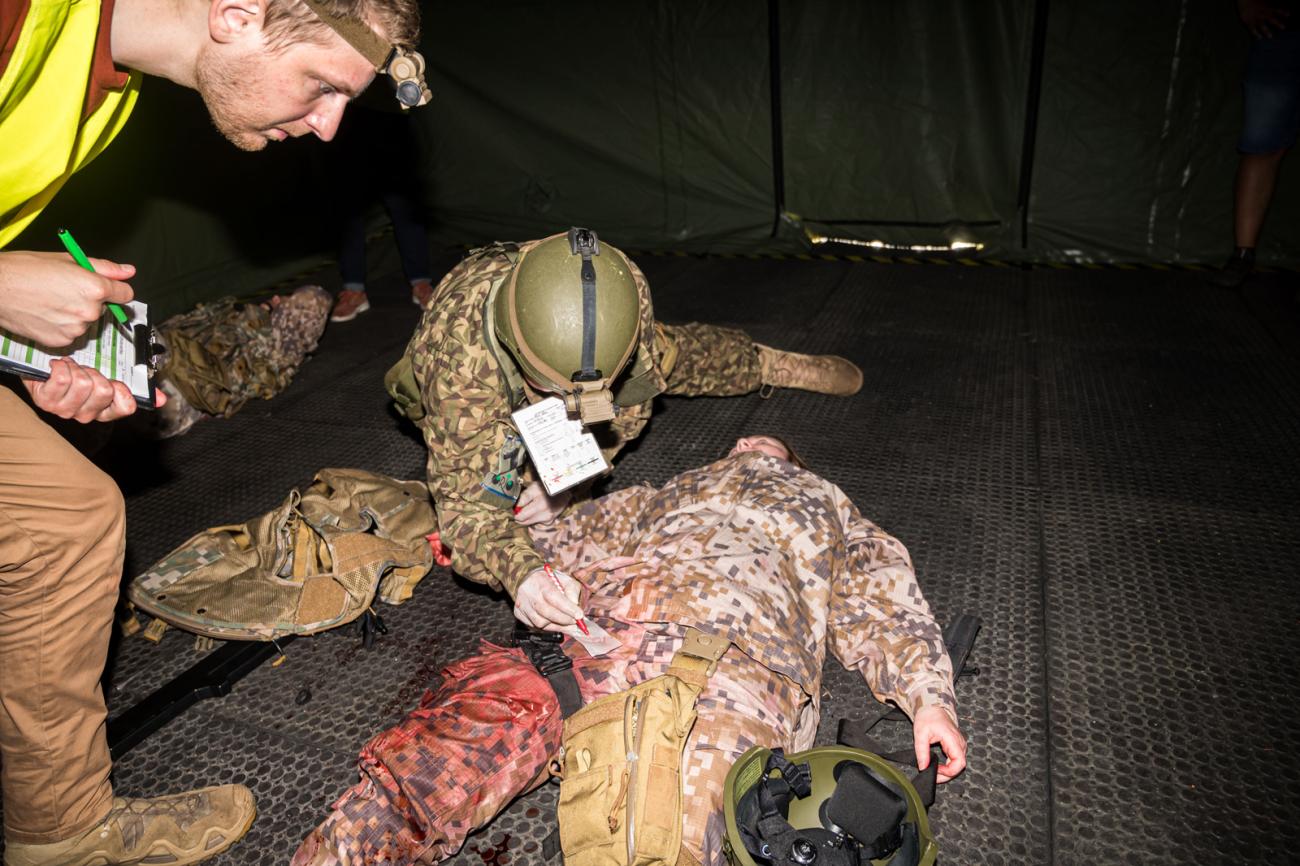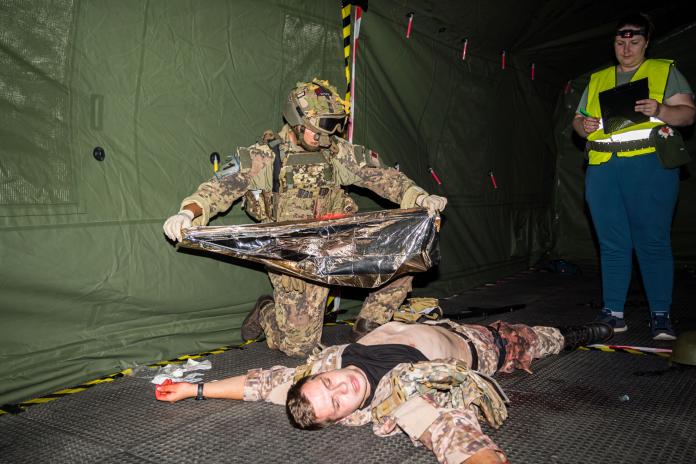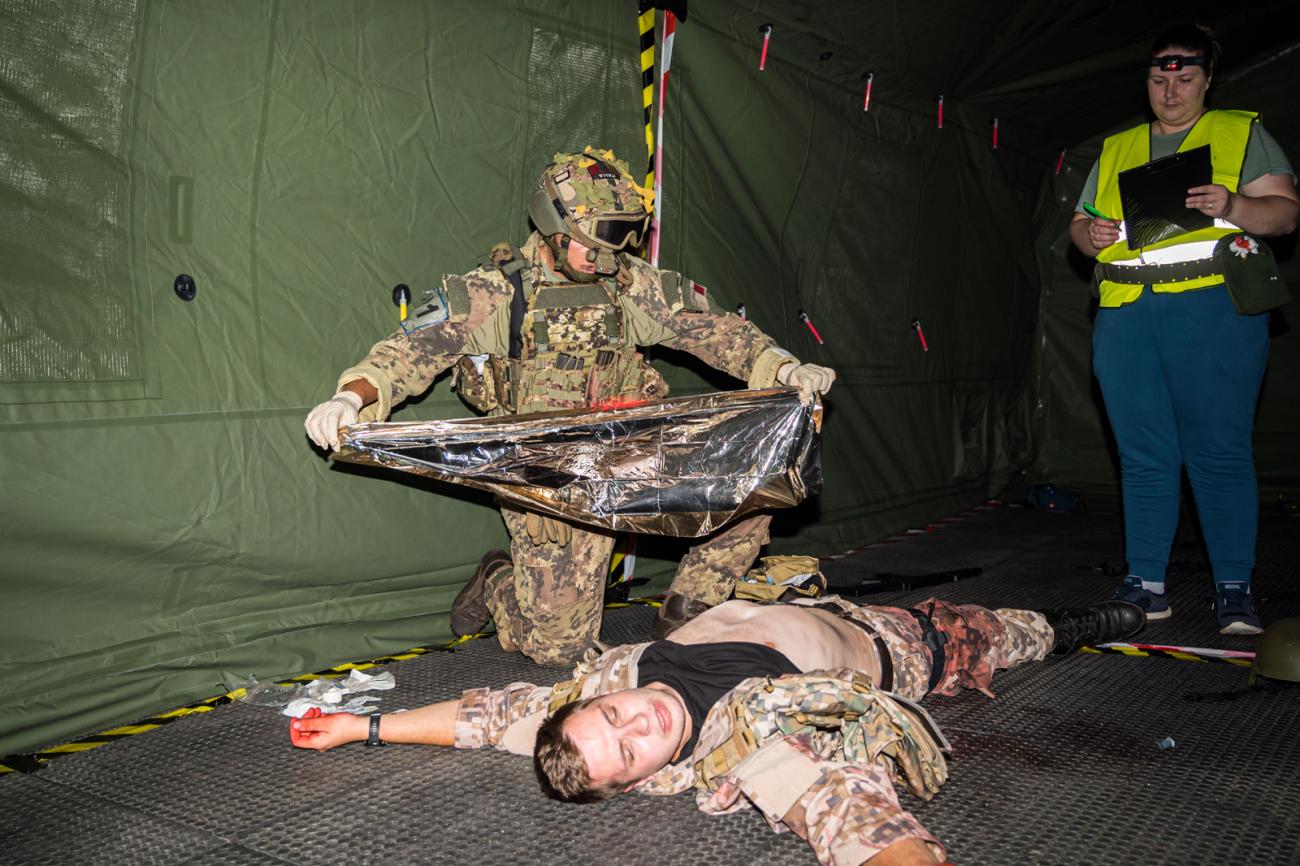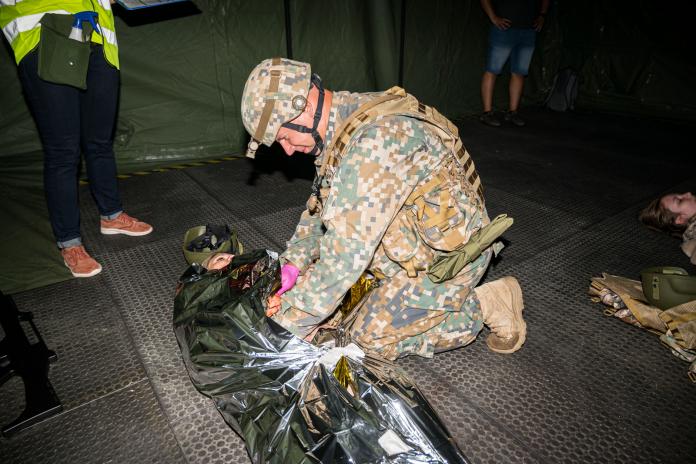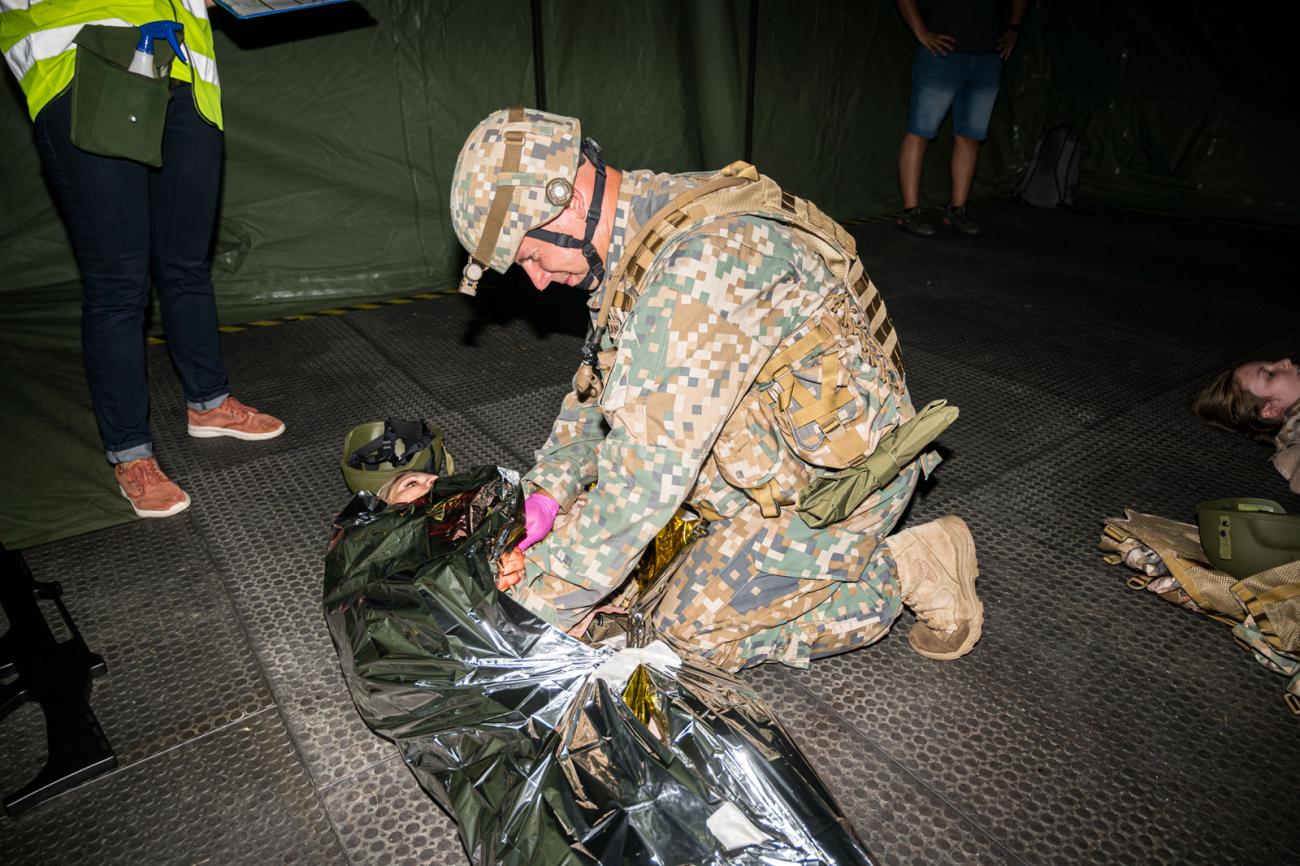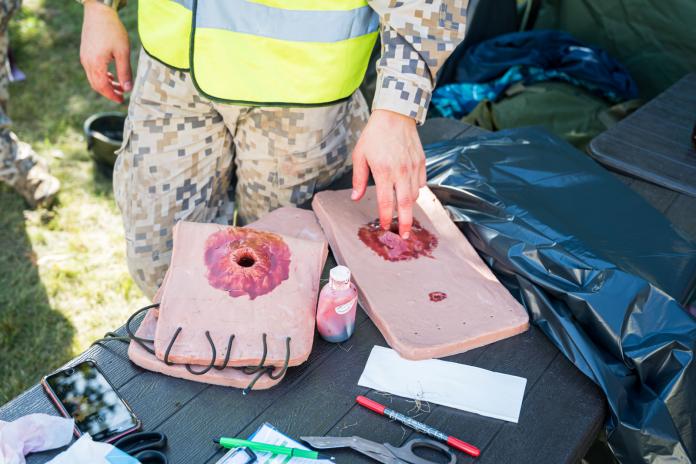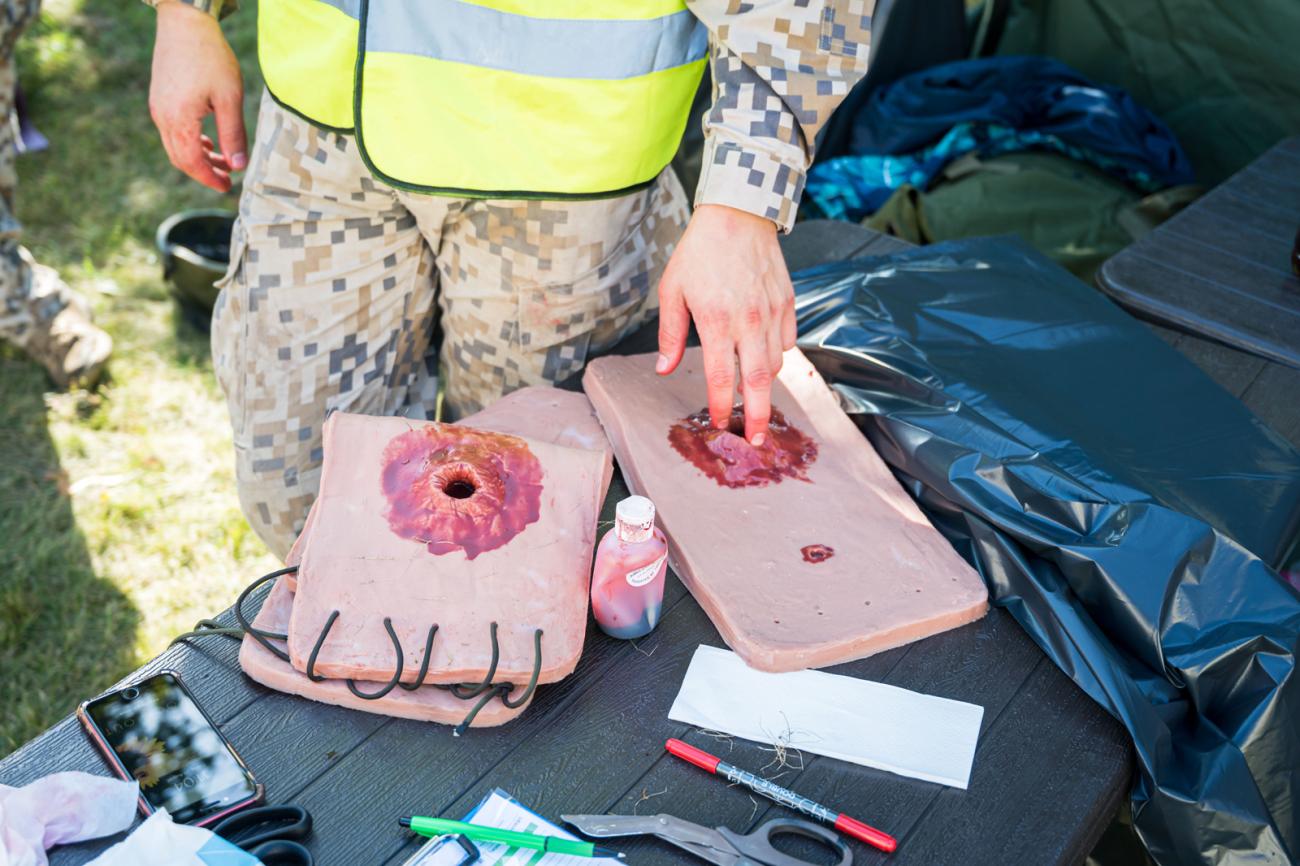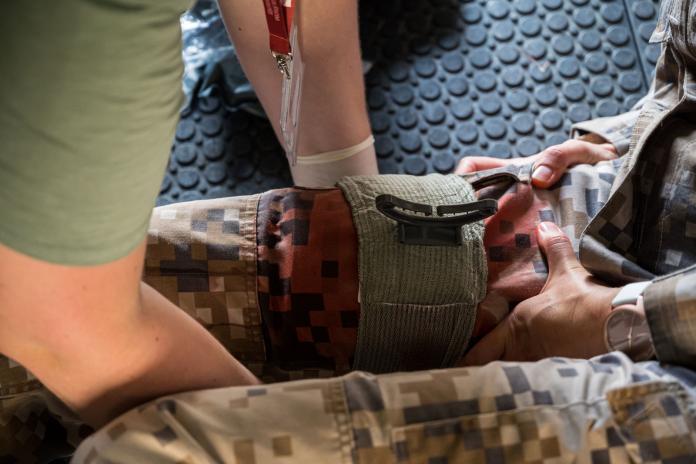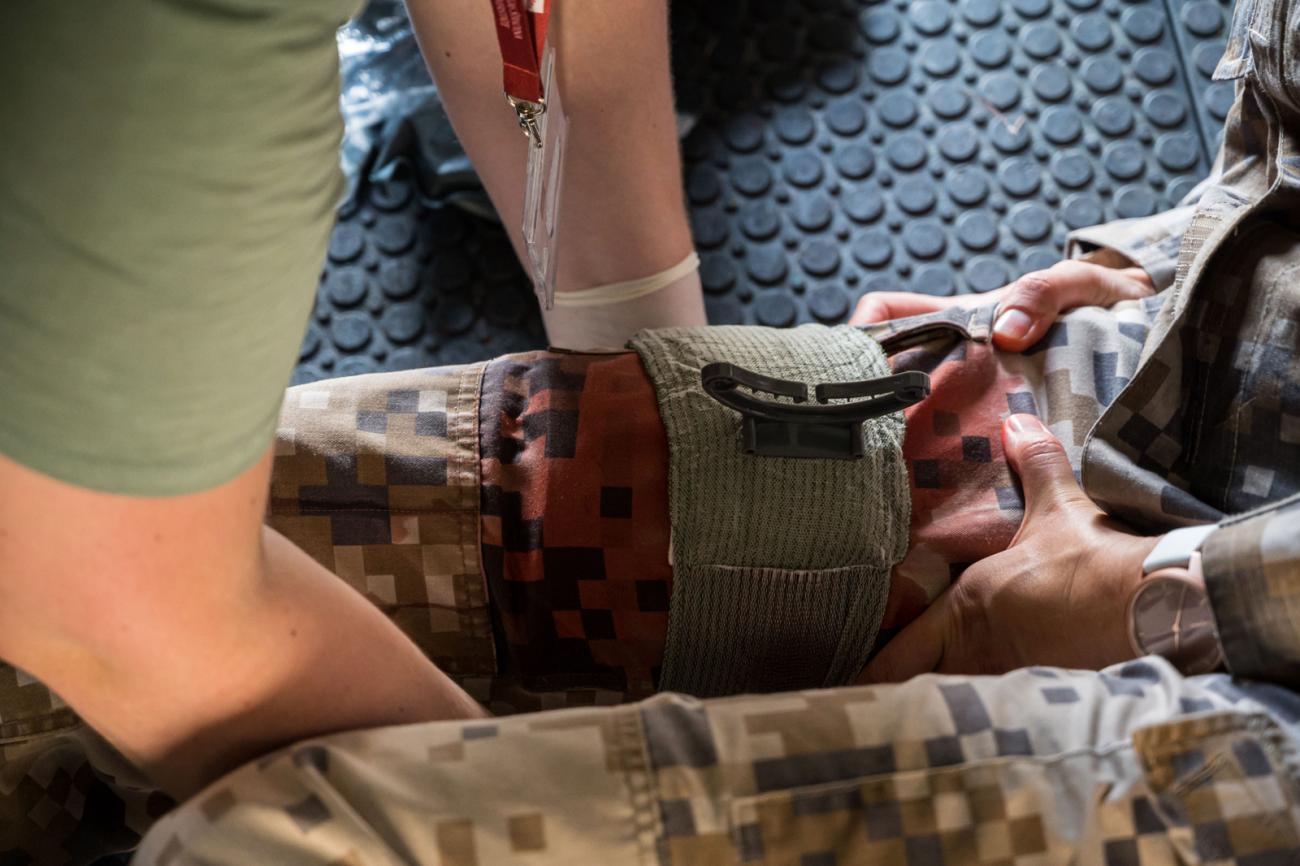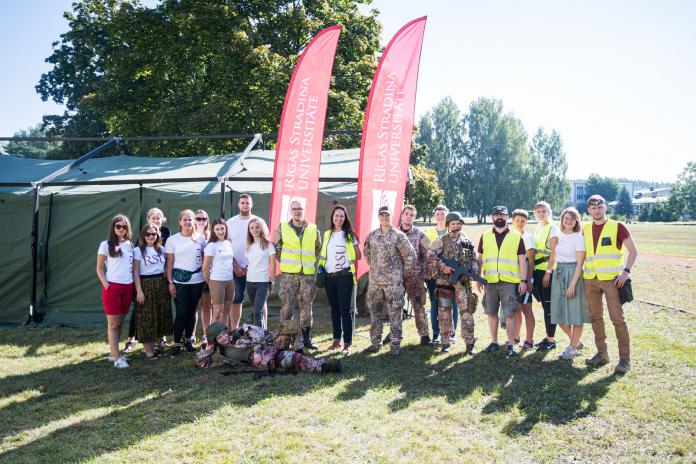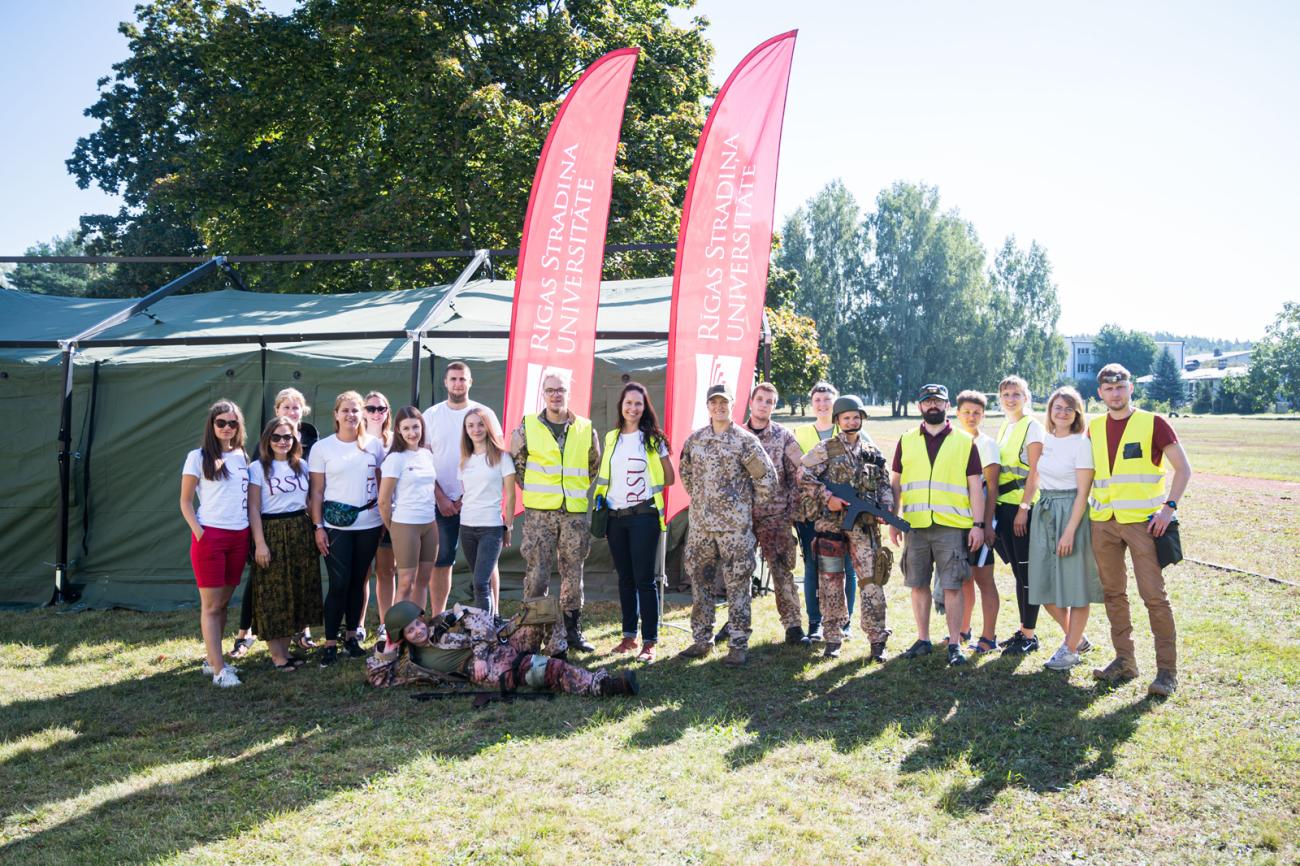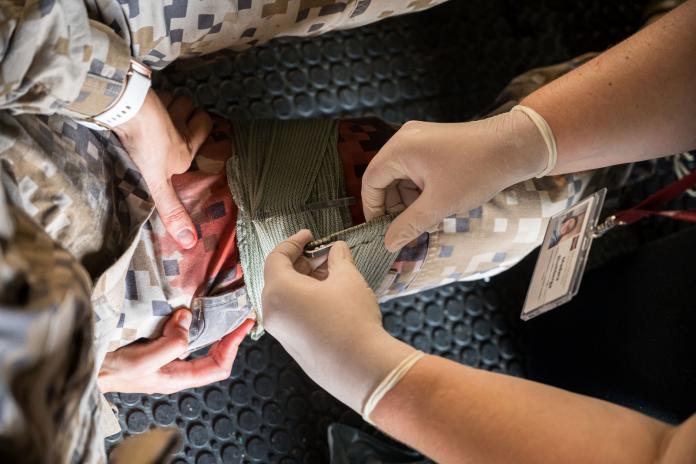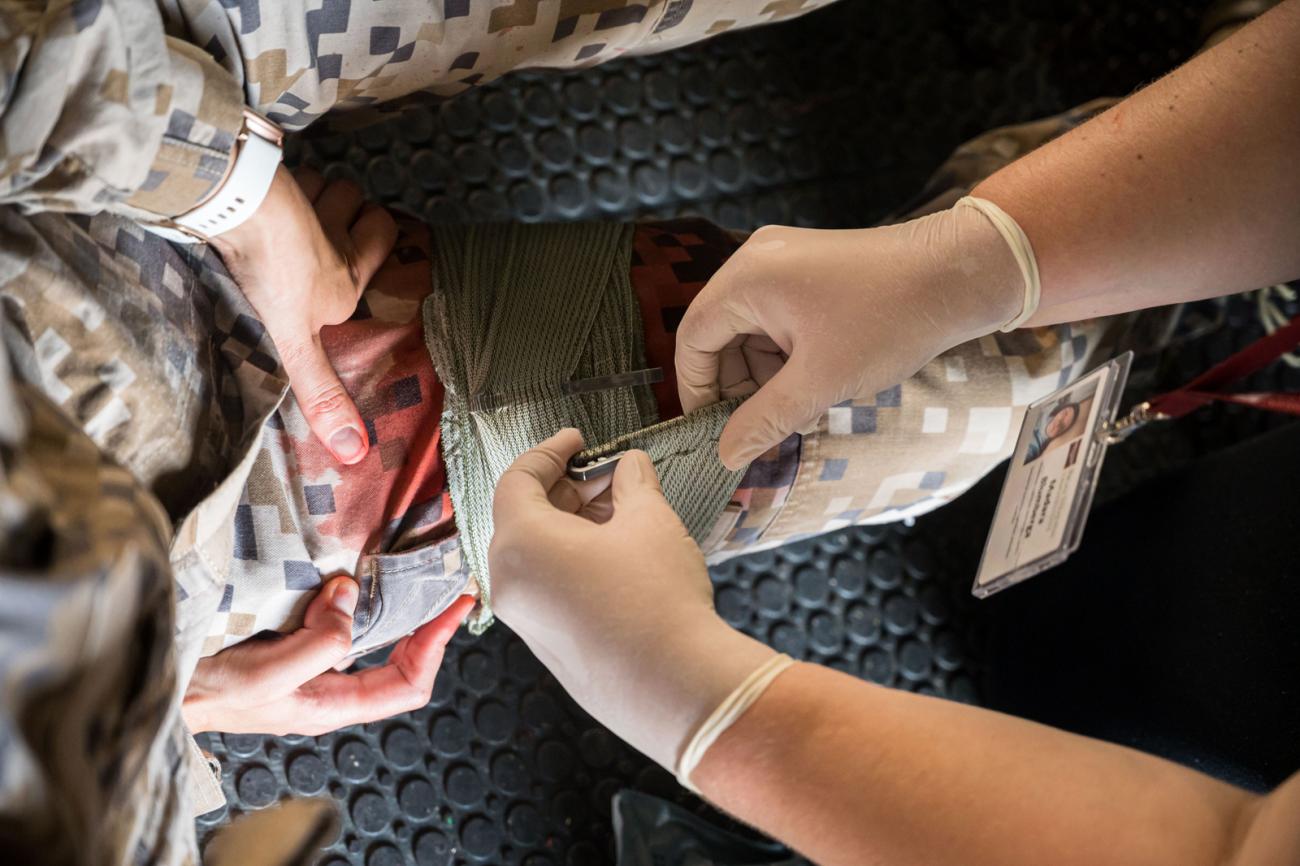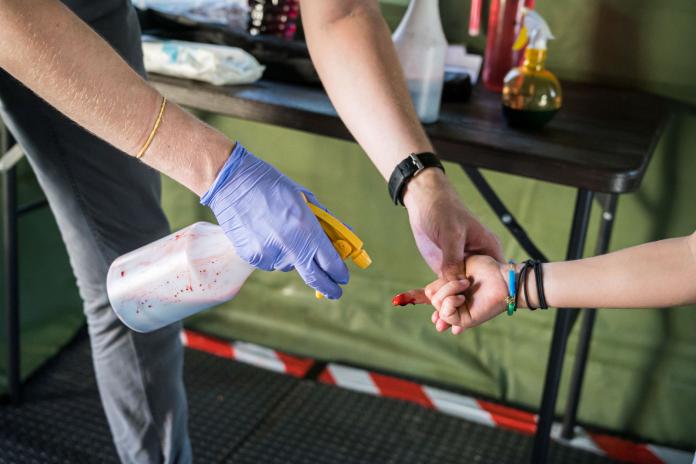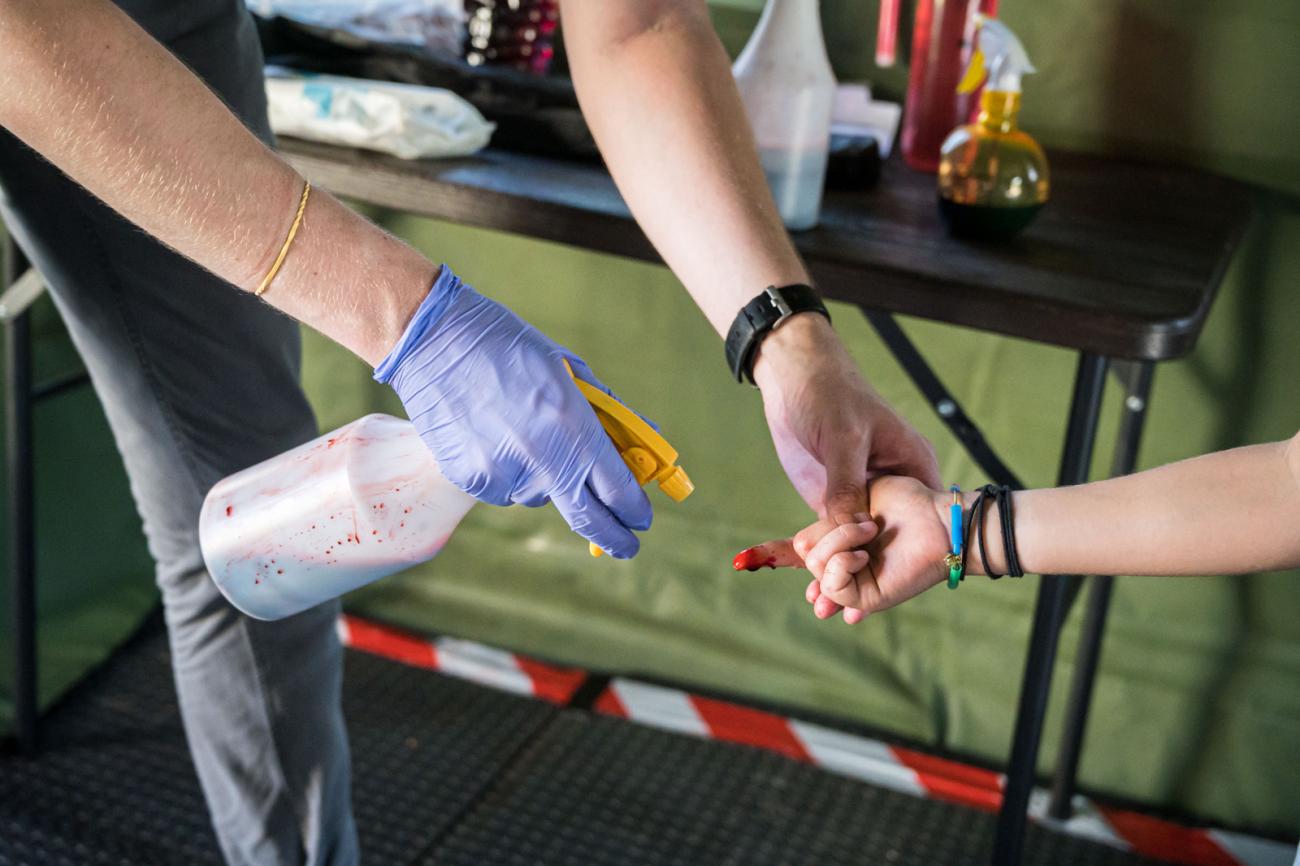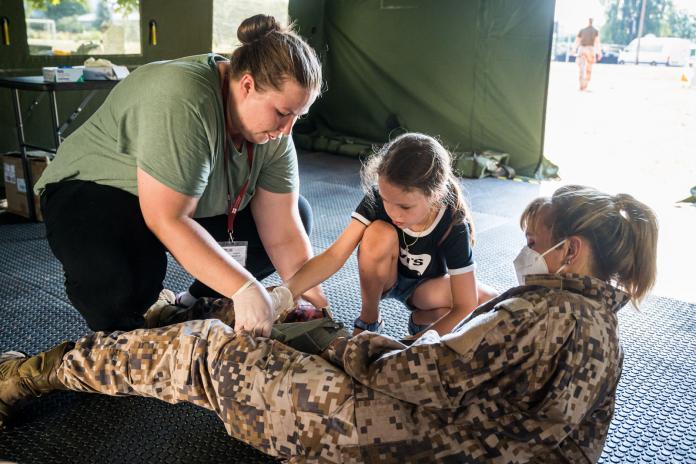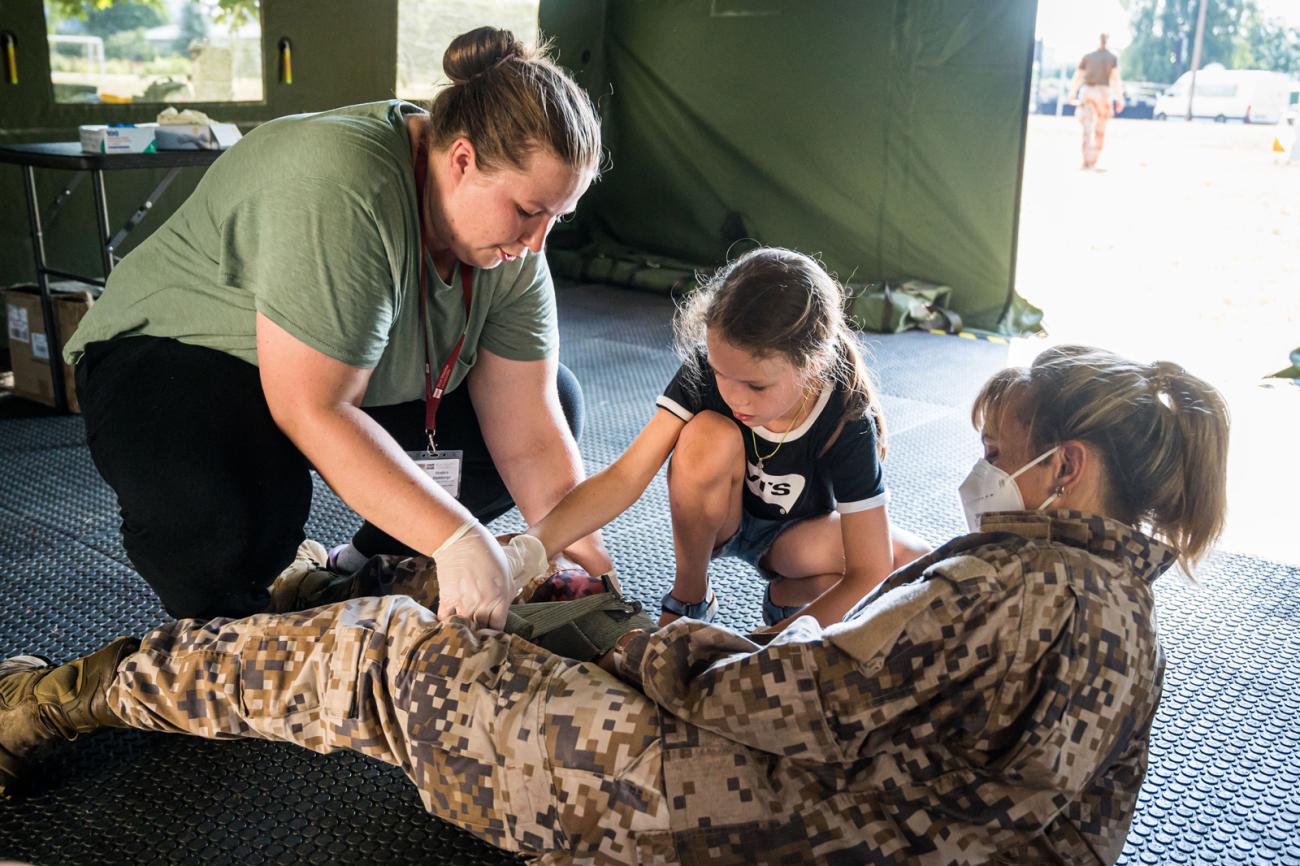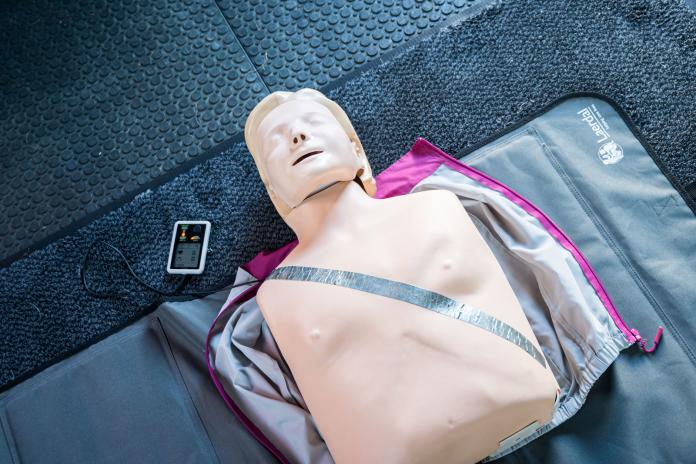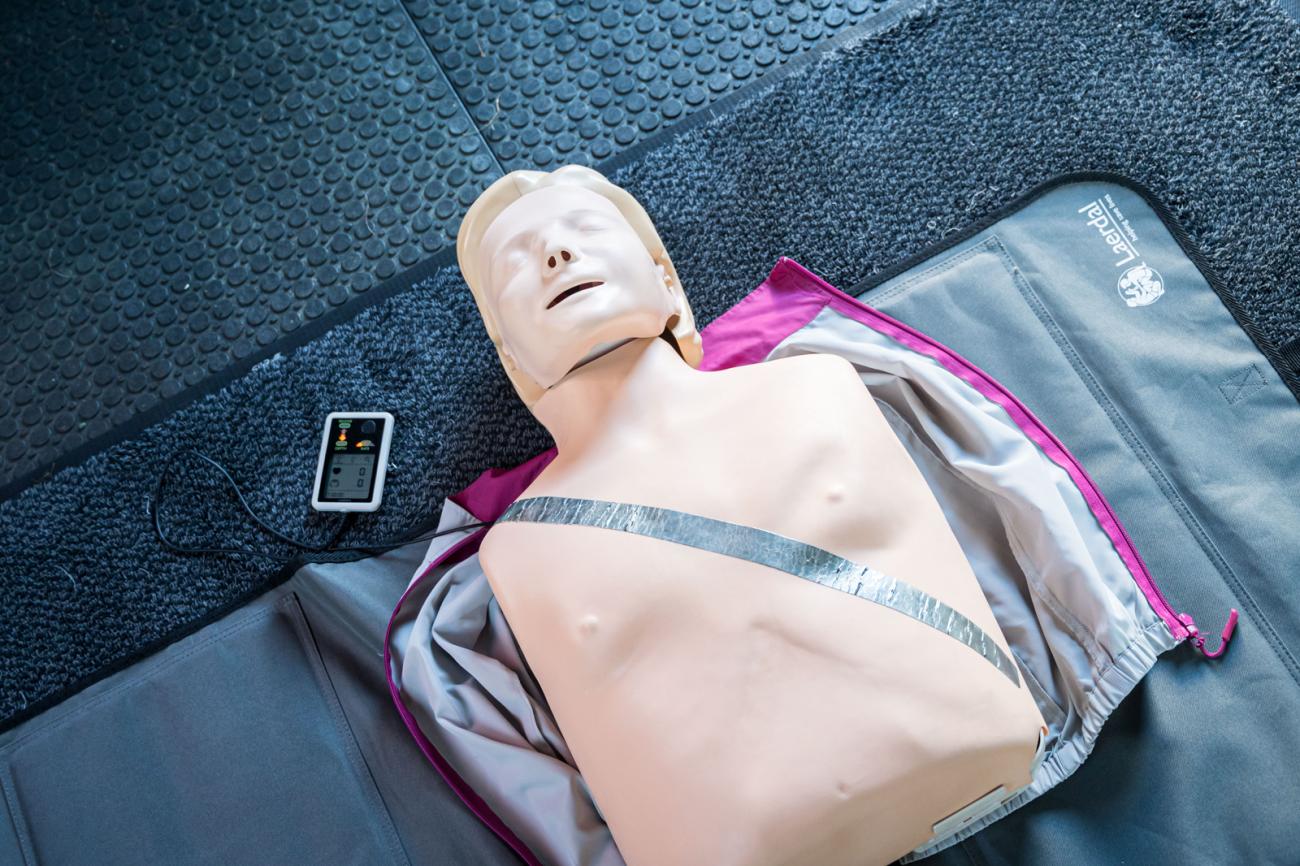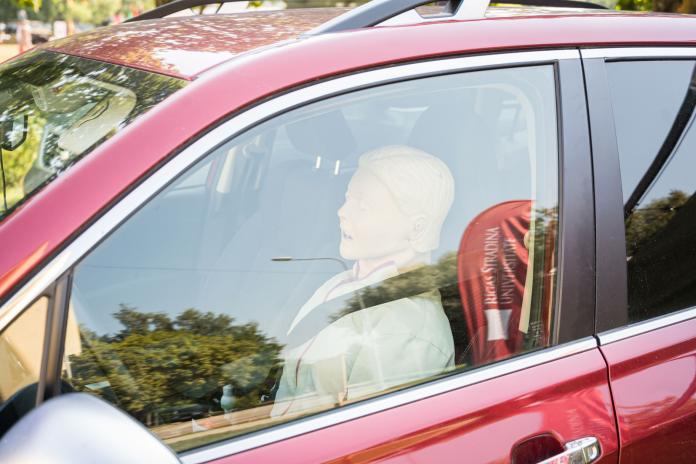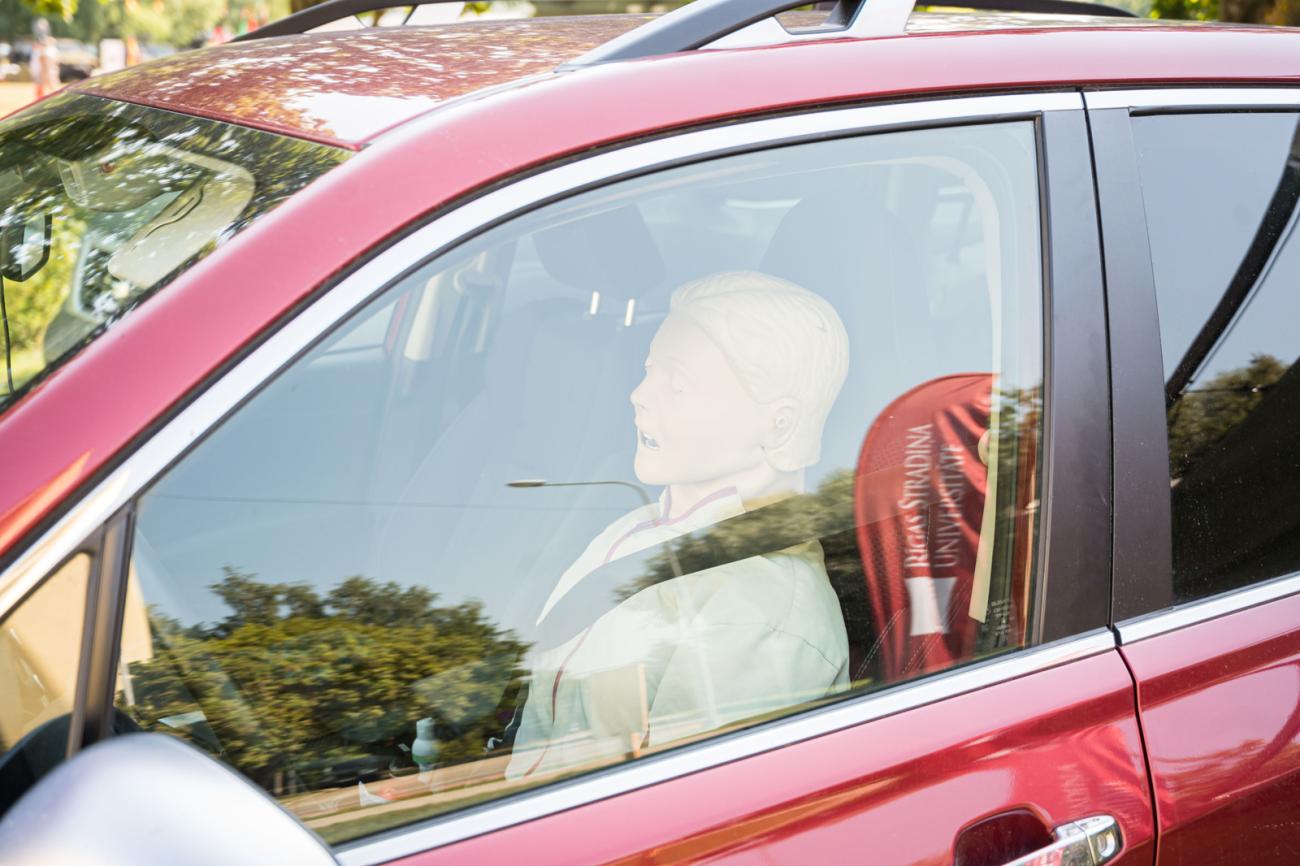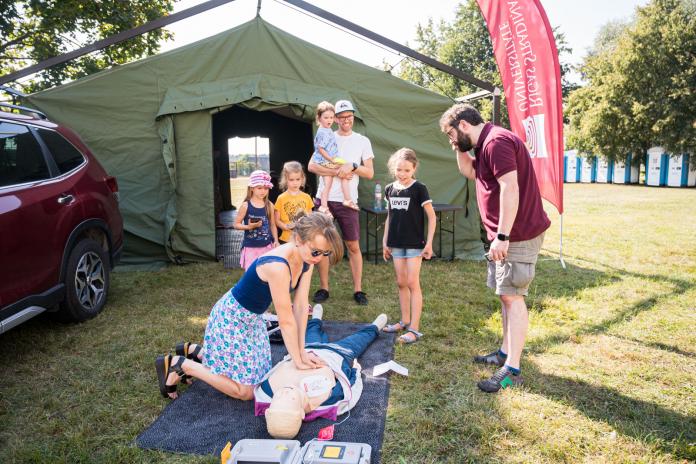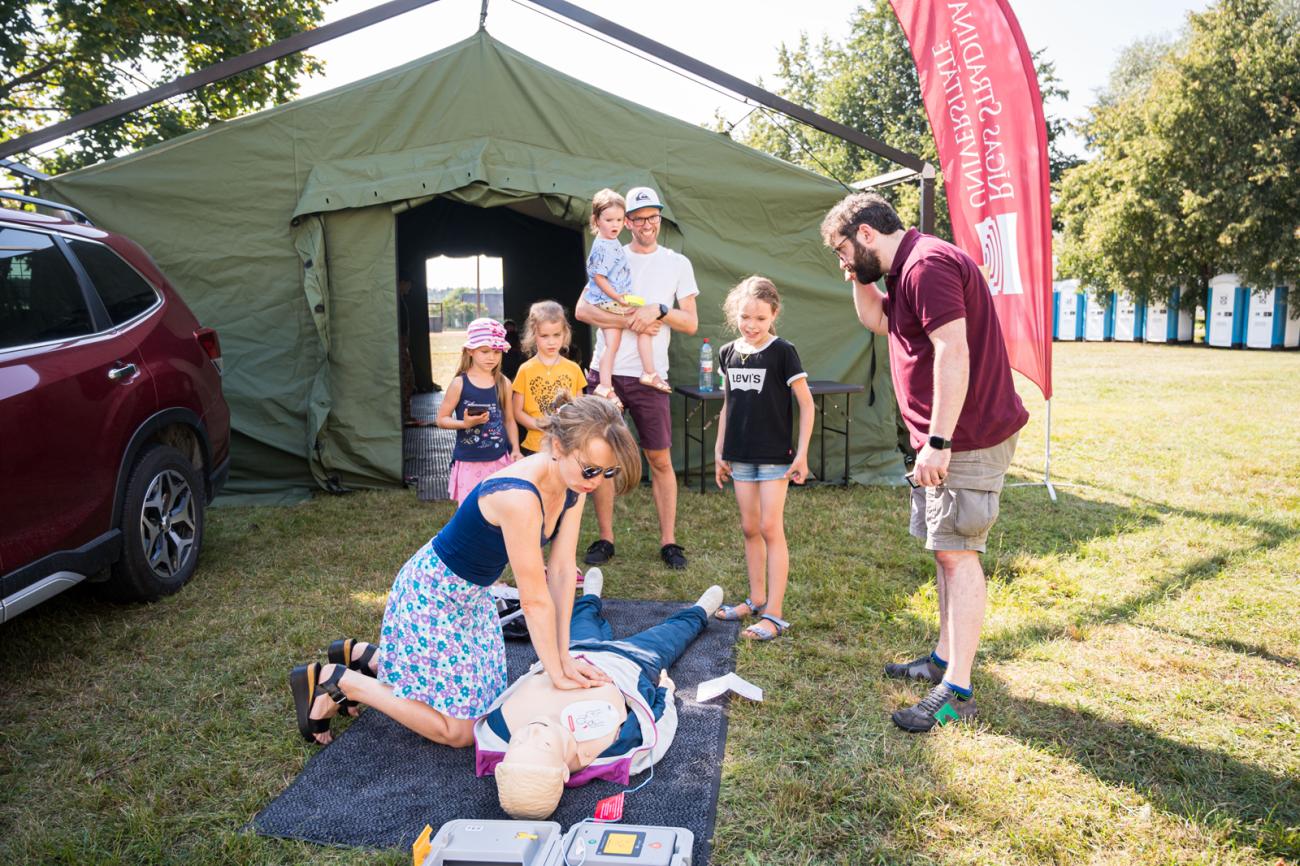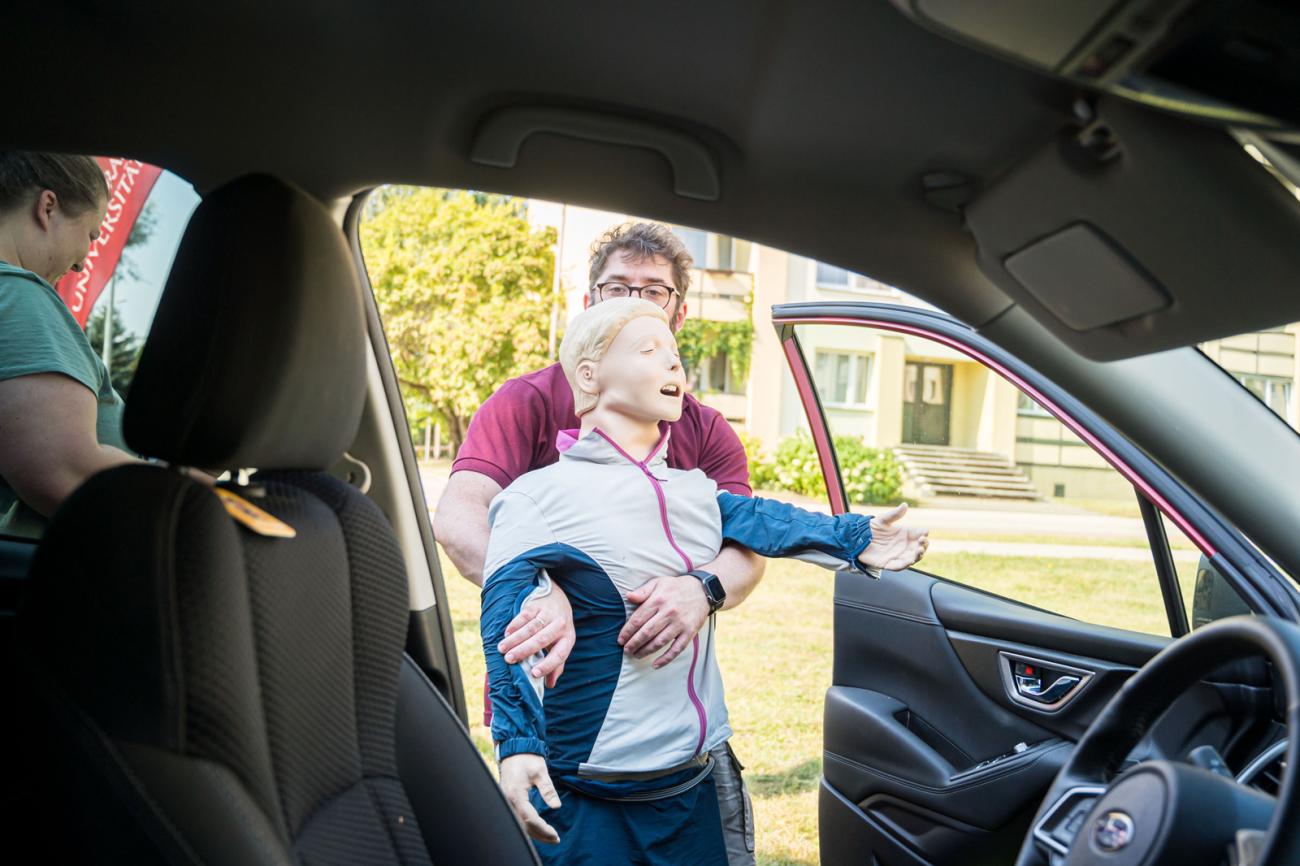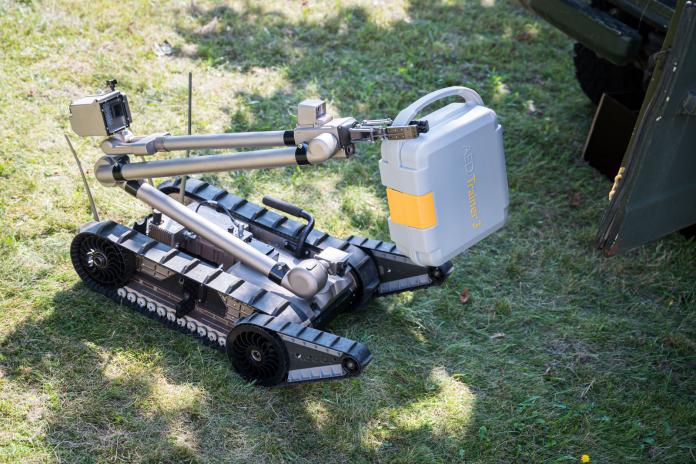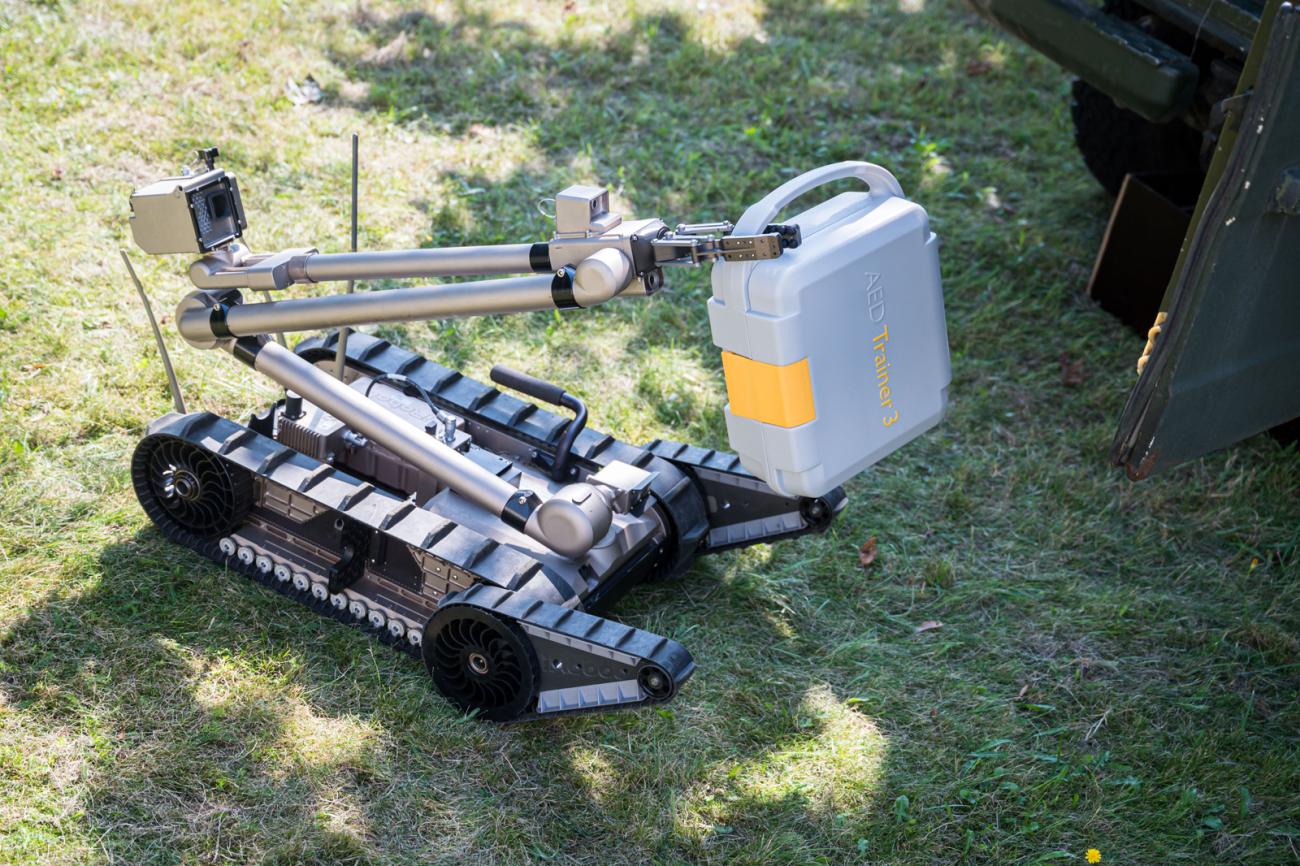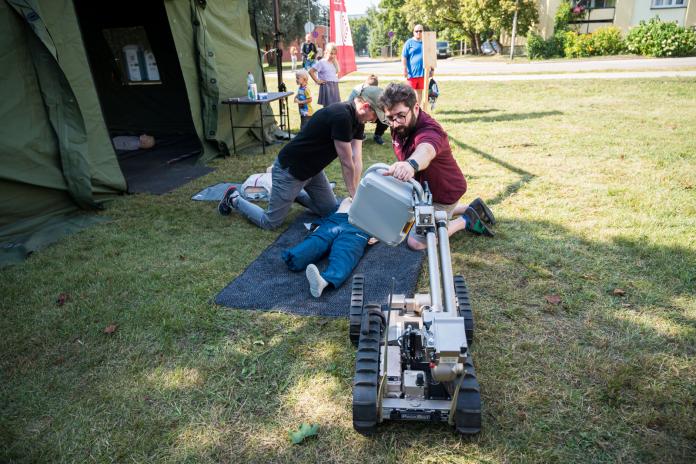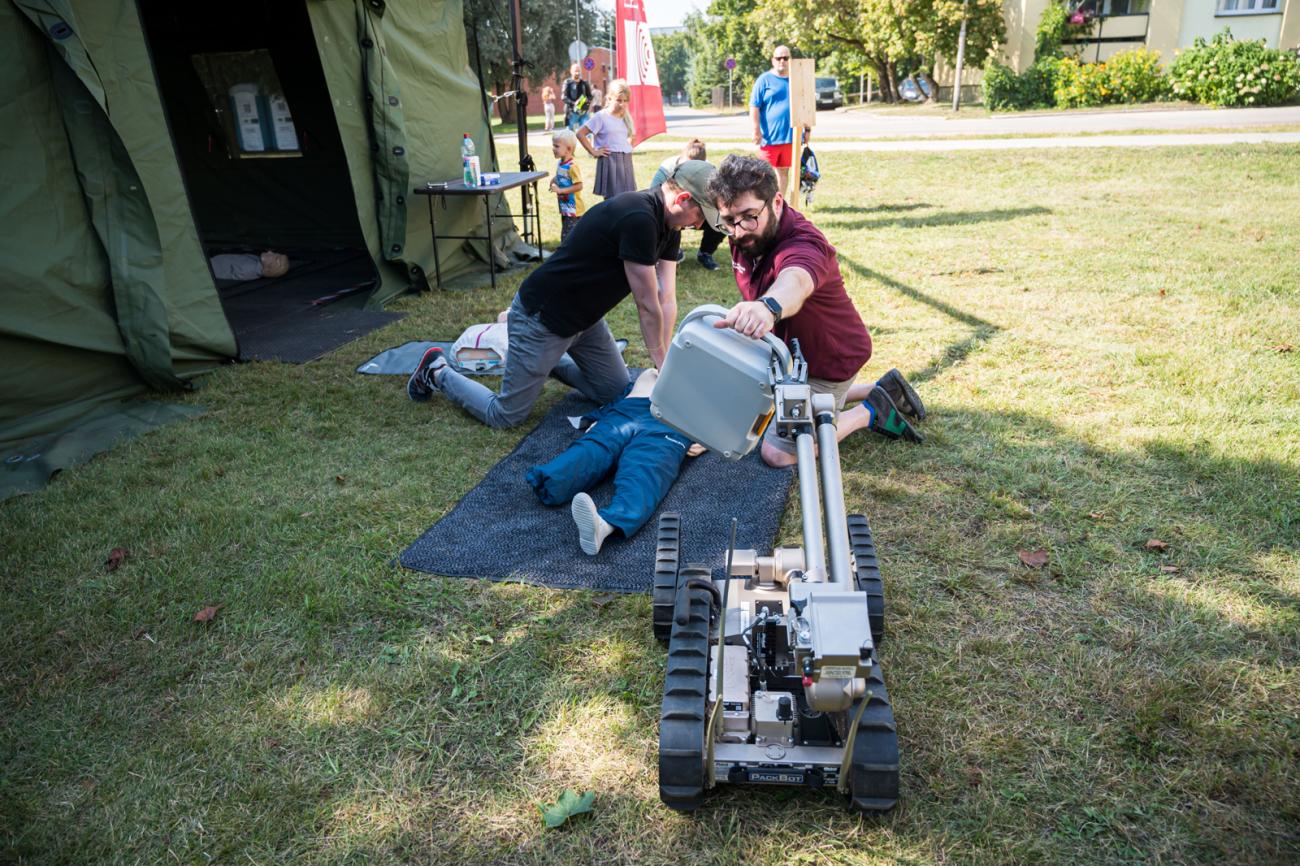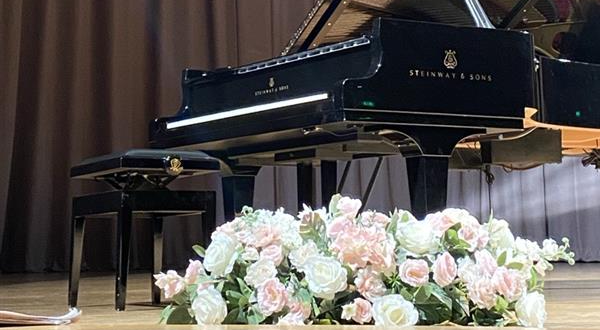RSU MITC Participates in International National Guard Exercise
On 26 and 27 August, the Rīga Stradiņš University (RSU) Medical Education Technology Centre (MITC) participated in the international military exercise Zemessardzes patruļa 2022 (National Guard Patrol) organised by the Latvian National Guard. The MITC provided one checkpoint and conducted demonstrations using mannequins and simulation equipment.
To test the national guards’ and soldiers’ first aid skills in combat conditions, the team from MITC provided a tent where they simulated night conditions and gunfire. Team members had to provide first aid to their injured peers within a set time limit and perform the actions included in the SMARCH (Security, Massive haemorrhage, Airway, Respiration, Circulation, and Hypothermia) algorithm as accurately as possible.
To test their theoretical knowledge in combat conditions, MITC staff role-played victims at the checkpoint, dressed in National Armed Forces uniforms with full personal equipment, with simulated, bleeding wounds. The task involved moving victims to a safe area, disarming them, examining them, locating their injuries and giving first aid by stopping life-threatening bleeding, providing warmth, and keeping victims conscious so that they could be properly transported for further assistance and care. The performance was assessed by simulation instructors from the MITC.
‘Setting up an exercise like this in a simulated environment allows participants to test their theoretical knowledge in practice. It should be noted that preparations for participation in the event took several months, during which the rules were precisely coordinated, simulated wounds were prepared, and all the necessary equipment for providing aid was ensured. I am proud of what the MITC team has done and especially of the fact that there are active national guards among our MITC colleagues,’ says Ieva Šlēziņa, the Director of the RSU MITC, commenting on her participation in the event.
This year marks the 30th year of the international military exercise. During this year’s event, participants had to complete tasks of various degrees of difficulty over several days, passing through more than 30 checkpoints that covered a total distance of 45 kilometres. Teams from National Guard battalions, regular armed forces, and allied armed forces from Poland, Lithuania, Denmark, and other countries took part in the military exercise. The aim of the exercise was to assess the military and physical fitness of the national guards and soldiers, and to promote international cooperation.
